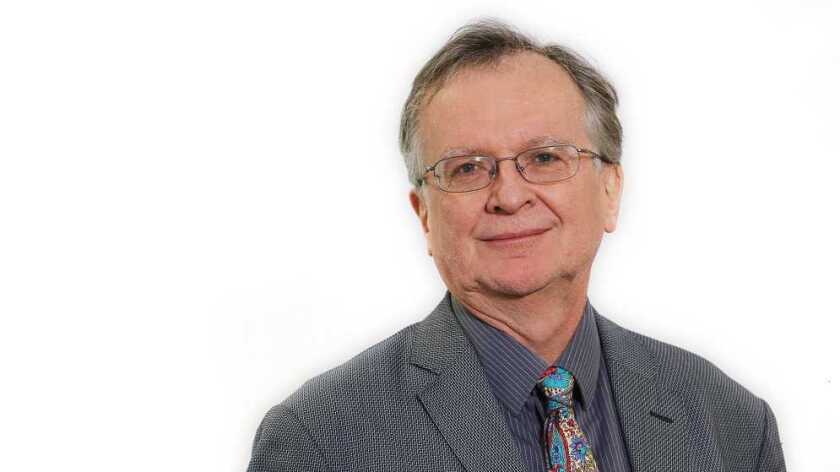It’s a long time since satellites played more than a marginal role in the world of telecoms – but we’re about to see the market, if you’ll excuse the excruciating pun, lift off into the stratosphere and beyond.
According to a Frost & Sullivan report in January, 89 small satellites were put into space in the third quarter of 2018 – that’s an average of almost one a day (but they’re usually launched in batches of three or more).
The same report says that there will be 11,746 small satellites launched by 2030. That means an average over the next 11 years of more than 1,000 a year, nearly three a day. That will create a market worth $69 billion, says Frost & Sullivan.
These are small satellites, note. Back in October 1945 Arthur C Clarke conjured up a vision of three giant, crewed space stations in orbit around the Earth to give near-universal telecoms and TV coverage. It took 20 years for his vision to begin to be realised with the first Intelsat satellite. But there weren’t any people on board Earlybird, which weighed just 149kg.
Today there are 363 geostationary satellites above the equator, beaming TV channels to our homes and, in some cases, carrying phone calls. They’re massive – 30 or 40 times the size of Earlybird.
The new Iridium satellites, the last of which went into orbit in January, are a lot smaller: about 660kg each, orbiting at about 750km above the Earth, but they’re not nano or micro satellites.
New-generation satellites are really tiny. Swarm, a start-up based near San Francisco, plans satellites about the size of the plastic box I use to bring my lunch into the office. CEO and co-founder Sara Spangelo, an aerospace engineer, says Swarm now has seven small satellites in orbit: the latest three went up on a SpaceX rocket on 3 December 2018.
That one launch, by the way, also carried 61 other satellites for other customers. That’s why launch costs for today’s small satellites are a fraction of what Intelsat and the others pay for their five-tonne monsters.
Small satellites in low orbite have other benefits. Latency is cut from 480ms round-trip to and from the Clarke orbit to 5ms or so; and the closeness to the Earth means you need less power, for the satellite and for the terminal.
On 19 February one of the biggest of these small-sat start-ups, OneWeb, will launch the first six of 900 satellites on a Russian-made Soyuz rocket from Kourou, French Guiana.
“The delivery of our first satellites brings us one step closer to our first launch and beginning to now build our system in space,” says OneWeb CEO Adrian Steckel. OneWeb’s powerful backers include SoftBank, Hughes, Bharti, Virgin and Intelsat itself.
I talked to a couple of new companies that are pioneering tiny satellites. Hiber, based in Delft in the Netherlands, has two satellites in orbit – but plans another two by the end of 2019, increasing to 16 and then to 48 or more. They’re all in a polar orbit, circling the Earth 16 times a day.
“That means each satellite covers everywhere once a day,” says CTO Maarten Engelen. “They scan the surface.” He and his colleagues founded the company in 2016, aiming at the internet of things (IoT) business to track or monitor shipping containers, rail cars, trucks and fuel tanks.
“We’re talking about non-real-time store and forward – small packets of data,” says Engelen.
Hiber is working on a number of business cases. Take the rural homeowner with a tank of heating gas, refilled at fixed intervals. If the tank could send a request only when the level was dropping, Engelen thinks that three out of four refill trips could be avoided.
Missing containers are a big issue for shipping companies and you might not believe it possible to lose a rail car – but it’s easy for them to get left on a quayside or shunted into a siding and just forgotten.
Hiber meanwhile is hoping to build a business not just running the satellite service but also offering the data and business insights. “We don’t want to be a simple connectivity provider. We’re in a good position to pull this all together.”
But why is the company called Hiber? Because the terminal hibernates most of the time, to save power, and switches on only when a satellite comes within range, explains Engelen.
Another small-satellite pioneer is Meir Moalem, CEO of Sky and Space Global (SAS). It already has three satellites in orbit, made in Denmark by GomSpace and launched in 2017 on an Indian rocket, but Moalem hopes the first of its production fleet of 200 tiny satellites will go into service later this year.
That depends on satisfactory test flights for Richard Branson’s Virgin Orbit, which will use a rocket attached to a Boeing 747. It’s a still-untried method, and there will be a lot of flight data to analyse from the first trials this year before Moalem and other customers consign their satellites to Branson’s company.
The plan is to launch 16-20 satellites at once with all 200 in service by the end of 2020. Branson has other clients ahead of SAS in the queue for Virgin Orbit, Moalem says, so that 2020 target is challenging.
Another challenge is the fund-raising. SAS has $25 million of backing so far. When I first met Moalem two years ago he said he would need $200 million in total.
Moalem is going for a different business to Hiber, data and some voice services in the tropics, from 15° north to 15° south of the equator. But that band includes a lot of people. I did a rough calculation and came to 1.3 billion or so, about 20% of the world’s people.






